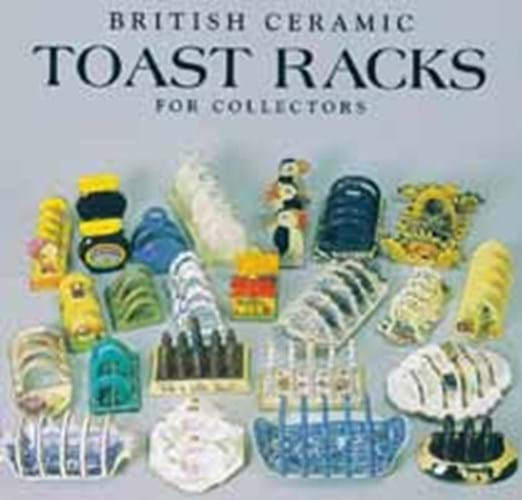
As cookery writer Nigel Slater says in his bookToast - the Story of a Boy's Hunger, "It's impossible not to to love someone who makes toast for you... as your teeth break through the rough toasted crust and soak into the doughy cushion of white bread underneath... you're smitten. Putty in their hands." For real lovers of toast there is also that essential piece of tableware - the toast rack.
In Britain, toast has been eaten for centuries, yet it was not until the 18th century that the toast rack appeared on the wealthy man's table. Buttered toast, which has been eaten since the early 17th century, is best piled high on plates. Some 100 years or so later, fresh dry toast became fashionable and needed to be served in a different way to allow the steam to escape to achieve perfect crunchiness.
The early toast rack designers of the 1770s obviously knew their toast and the first racks to appear on the market were made of silver and silver plate, with fine dividers built onto either a tray or a skeleton base. They were simple and effective.
By the 1780s, creamware examples followed and the design and decoration of the toast racks manufactured by so many of the English potteries make them a good collecting subject. Printed, painted or moulded, the decoration takes many forms but is usually in the house style of the manufacturer, with the dividers in many shapes and usually pierced to allow the toast to dry.
Collectors Peter and Margaret Crumpton discovered that The Pottery Gazette was about the only source of published material on toast racks, so they decided to write this small reference work on British ceramic toast racks with their focus being on shape. Many factories produced the same shape for years although the colourway and pattern may have changed in response to fashion.
Occasionally a rack may be found with two marks - one for the manufacturer, the other for the decorating company.
The authors cover the history of toast and racks including silver and plated pieces, with the main section and its 90 colour plates being on ceramic toast racks. It's hard to identify the early examples, but throughout the 19th and 20th centuries most were factory marked, including Wedgwood, Crown Devon, Burgess & Leigh, Poole Pottery, Clarice Cliff and Susie Cooper.
Novelty racks appeal, as do the charming advertising examples such as Golden Shred marmalade. Racks are photographed alphabetically by factory and there are 23 colour plate pages, and a useful index of manufacturers and retailers.
Nice little book for collectors and plenty of little titbits, such as that hard toast plunged into a jug of cold water was once prescribed for "those with weak bowels".
British Ceramic Toast Racks for Collectors by Peter and Margaret Crumpton, published by Richard Dennis, The Old Chapel, Shepton Beauchamp, Somerset TA19 OLE email: books@richarddennispublications.com ISBN 090368585X £18 sb




